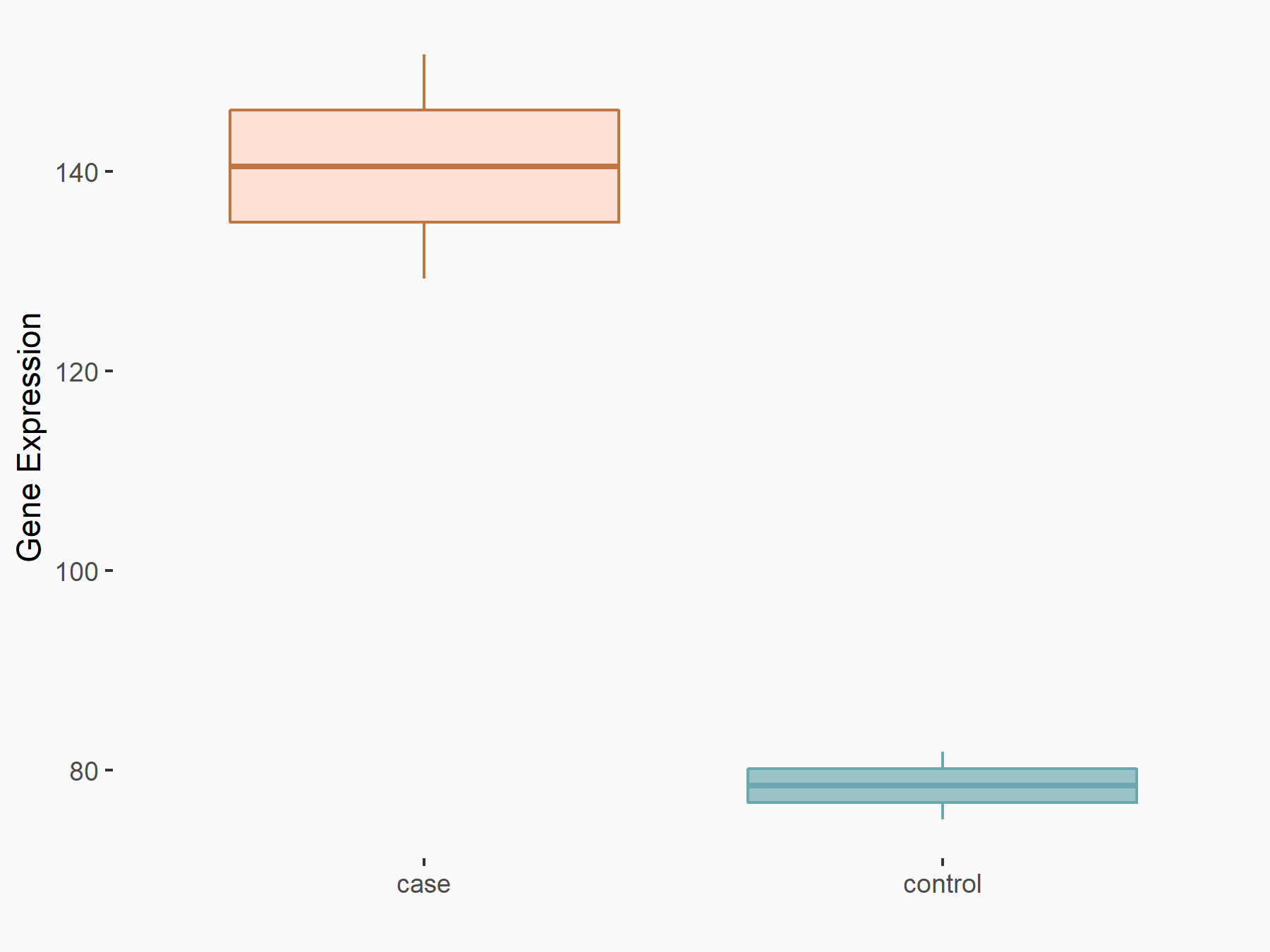m6A Target Gene Information
General Information of the m6A Target Gene (ID: M6ATAR00134)
Full List of m6A Methylation Regulator of This Target Gene and Corresponding Disease/Drug Response(s)
MIR186
can be regulated by the following regulator(s), and cause disease/drug response(s). You can browse detail information of regulator(s) or disease/drug response(s).
Browse Regulator
Browse Disease
Methyltransferase-like 3 (METTL3) [WRITER]
| Representative RNA-seq result indicating the expression of this target gene regulated by METTL3 | ||
| Cell Line | mouse embryonic stem cells | Mus musculus |
|
Treatment: METTL3-/- ESCs
Control: Wild type ESCs
|
GSE145309 | |
| Regulation |
  |
logFC: 8.42E-01 p-value: 2.96E-03 |
| More Results | Click to View More RNA-seq Results | |
| In total 1 item(s) under this regulator | ||||
| Experiment 1 Reporting the m6A Methylation Regulator of This Target Gene | [1] | |||
| Response Summary | microRNA 186 (MIR186)/METTL3 axis contributed to the progression of Hepatoblastoma via the Wnt/beta-catenin signalling pathway. | |||
| Target Regulation | Down regulation | |||
| Responsed Disease | Hepatoblastoma | ICD-11: 2C12.01 | ||
| Pathway Response | Wnt signaling pathway | hsa04310 | ||
| Cell Process | Cell aggressive | |||
| In-vitro Model | HCCLM9 | Adult hepatocellular carcinoma | Homo sapiens | CVCL_A5CU |
| HEK293 | Normal | Homo sapiens | CVCL_0045 | |
| Hepa 1-6 | Hepatocellular carcinoma of the mouse | Mus musculus | CVCL_0327 | |
| Hep-G2 | Hepatoblastoma | Homo sapiens | CVCL_0027 | |
| HuH-6 | Hepatoblastoma | Homo sapiens | CVCL_4381 | |
| In-vivo Model | Cells transfected with miR-186 overexpression lentivirus (Lenti-miR-186), miR-186 inhibitor (Lenti-anti-miR-186), Lenti-miR-186 & METTL3 overexpression plasmid (Lenti-METTL3), Lenti-anti-miR-186 & METTL3 shRNA (sh-METTL3) or empty lentivirus control (Lenti-NC) were subcutaneously injected into the lower flank of nude mice. | |||
Heterogeneous nuclear ribonucleoproteins C1/C2 (HNRNPC) [READER]
| In total 1 item(s) under this regulator | ||||
| Experiment 1 Reporting the m6A Methylation Regulator of This Target Gene | [2] | |||
| Response Summary | HNRNPC, YTHDF, ZC3H13, YTHDC2, and METTL14 were dysregulated in esophageal cancer tissues. miR-186 interacted with HNRNPC and suppressed the expression of HNRNPC. Four miRNAs (microRNA 186 (MIR186), miR-320c, miR-320d, and miR-320b) were used to construct a prognostic signature, which could serve as a prognostic predictor independent from routine clinicopathological features. | |||
| Responsed Disease | Esophageal cancer | ICD-11: 2B70 | ||
| In-vitro Model | HEEC cell line (Normal esophageal epithelial cell line) | |||
| KYSE-30 | Esophageal squamous cell carcinoma | Homo sapiens | CVCL_1351 | |
| TE-1 | Esophageal squamous cell carcinoma | Homo sapiens | CVCL_1759 | |
Esophageal cancer [ICD-11: 2B70]
| In total 1 item(s) under this disease | ||||
| Experiment 1 Reporting the m6A-centered Disease Response | [2] | |||
| Response Summary | HNRNPC, YTHDF, ZC3H13, YTHDC2, and METTL14 were dysregulated in esophageal cancer tissues. miR-186 interacted with HNRNPC and suppressed the expression of HNRNPC. Four miRNAs (microRNA 186 (MIR186), miR-320c, miR-320d, and miR-320b) were used to construct a prognostic signature, which could serve as a prognostic predictor independent from routine clinicopathological features. | |||
| Responsed Disease | Esophageal cancer [ICD-11: 2B70] | |||
| Target Regulator | Heterogeneous nuclear ribonucleoproteins C1/C2 (HNRNPC) | READER | ||
| In-vitro Model | HEEC cell line (Normal esophageal epithelial cell line) | |||
| KYSE-30 | Esophageal squamous cell carcinoma | Homo sapiens | CVCL_1351 | |
| TE-1 | Esophageal squamous cell carcinoma | Homo sapiens | CVCL_1759 | |
Liver cancer [ICD-11: 2C12]
| In total 1 item(s) under this disease | ||||
| Experiment 1 Reporting the m6A-centered Disease Response | [1] | |||
| Response Summary | microRNA 186 (MIR186)/METTL3 axis contributed to the progression of Hepatoblastoma via the Wnt/beta-catenin signalling pathway. | |||
| Responsed Disease | Hepatoblastoma [ICD-11: 2C12.01] | |||
| Target Regulator | Methyltransferase-like 3 (METTL3) | WRITER | ||
| Target Regulation | Down regulation | |||
| Pathway Response | Wnt signaling pathway | hsa04310 | ||
| Cell Process | Cell aggressive | |||
| In-vitro Model | HCCLM9 | Adult hepatocellular carcinoma | Homo sapiens | CVCL_A5CU |
| HEK293 | Normal | Homo sapiens | CVCL_0045 | |
| Hepa 1-6 | Hepatocellular carcinoma of the mouse | Mus musculus | CVCL_0327 | |
| Hep-G2 | Hepatoblastoma | Homo sapiens | CVCL_0027 | |
| HuH-6 | Hepatoblastoma | Homo sapiens | CVCL_4381 | |
| In-vivo Model | Cells transfected with miR-186 overexpression lentivirus (Lenti-miR-186), miR-186 inhibitor (Lenti-anti-miR-186), Lenti-miR-186 & METTL3 overexpression plasmid (Lenti-METTL3), Lenti-anti-miR-186 & METTL3 shRNA (sh-METTL3) or empty lentivirus control (Lenti-NC) were subcutaneously injected into the lower flank of nude mice. | |||
References